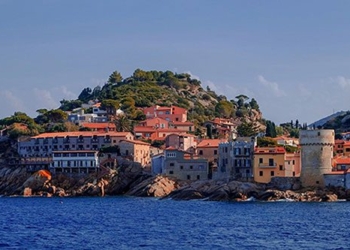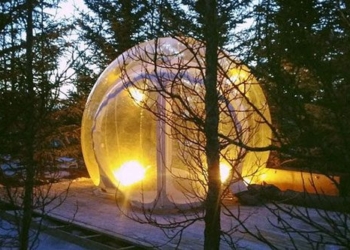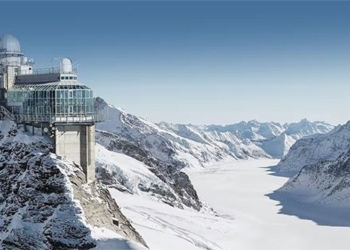Completed in 1799, Hawa Mahal is not only a stunning architectural marvel but also a technical wonder with its effective self-cooling capabilities.
The Hawa Mahal Palace is located in the city of Jaipur, Rajasthan. Today, this structure is one of the most recognizable symbols of India and a famous tourist attraction, drawing approximately one million visitors each year. Hawa Mahal not only boasts magnificent architecture but also provides lessons in sustainable construction, CNN reported on May 26.
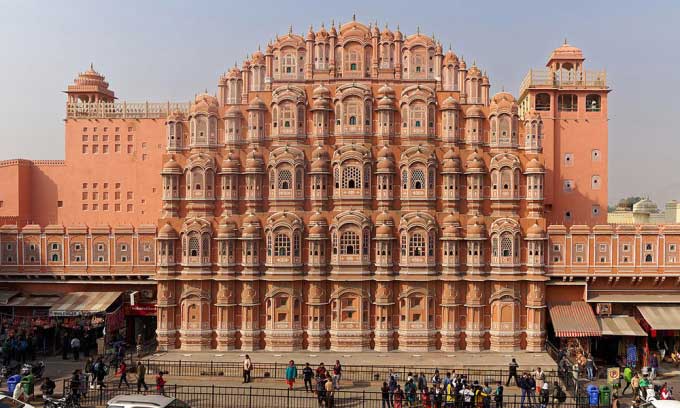
Impressive architecture of the “Palace of Winds” Hawa Mahal. (Photo: Wikimedia).
Standing at 26.5 meters tall and featuring 953 intricately decorated windows, Hawa Mahal is a “feast” for the eyes. However, few realize that what they see from the main road is actually the back of the building.
According to Dr. Mahendra Khadgawat, director of the Archaeological and Museum Department of Rajasthan, King Sawai Pratap Singh (1764 – 1803) was a devotee of the Hindu god Krishna and commissioned architect Lal Chand Usta to design a structure resembling Krishna’s crown. Thus, Hawa Mahal came into existence.
“The primary purpose of the building was to allow royal women to enjoy the street scenery and daily parades without being seen by anyone,” Khadgawat stated. He referred to a custom in medieval India where women, especially from the upper class, had to conceal themselves from the public gaze.
Architect Kavita Jain, a conservation and heritage expert, noted that Hawa Mahal serves multiple purposes. “For the townspeople, the back side facing the street is an intriguing sight. For the king, it is a legendary structure that reminds generations of him. For the royal ladies, it is a way to connect with commoners and ceremonies without appearing in public,” she said.
“But to the discerning eye, this is an ingenious technical wonder, where aesthetically appealing elements are used to create a microclimate pleasant enough for the queens to enjoy their strolls,” Jain added.
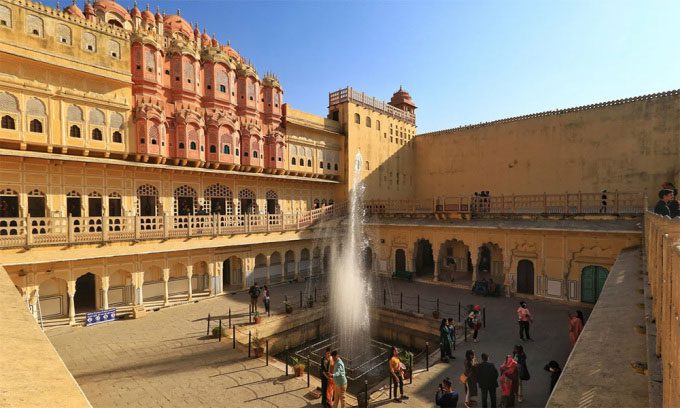
Around one million people visit Hawa Mahal each year. (Photo: Vishal Bhatnagar/NurPhoto/Getty)
Today, Hawa Mahal is an exemplary case of the role of climate in historical designs in India and provides evidence of in-depth knowledge of thermodynamic principles.
In Hindi, Hawa means “wind” and Mahal means “palace” – a very fitting name. “The orientation of the building is on an east-west axis, aligned with the natural wind direction in the region. The wind enters the palace from the west (through a series of open spaces). It draws moisture from the water pond in the courtyard thanks to the principle of convection, where warm air rises and cool air descends,” Shyam Thakkar, an architect in Jaipur, explained.
The wind carrying moisture then moves toward the 953 windows and cools the air through the Venturi effect – air moving through a narrow passage increases wind speed and decreases pressure. “The intricate grid system of the windows helps to break up and evenly distribute airflow, ensuring there are no hot spots. Additionally, they also control direct sunlight. Using lime (chuna) as the grid material is the final touch. Chuna can adjust the temperature,” he added.
The floors are also separated by season, according to Sanjay Sharma, a guide at Hawa Mahal for over 20 years. “The number and size of open spaces vary by floor. Some floors have windows covered with stained glass, while others have open windows. The ratio of open space on each floor is adjusted according to seasonal use, specifically before winter, spring, summer, and into winter, making Hawa Mahal a building well adapted to the climate,” he stated.








































